| Year
|
Portrait
|
Laureate
(birth/death)
|
Country
|
Rationale
|
Affiliation
|
| 2013[1]
|

|
Cornelia Bargmann
(born 1961)
|
 United States United States
|
"for the genetics of neural circuits and behavior, and synaptic guidepost molecules."
|
Rockefeller University
|

|
David Botstein
(b. 1942)
|
 Switzerland Switzerland
 United States United States
|
"for linkage mapping of Mendelian disease in humans using DNA polymorphisms."
|
Princeton University
|

|
Lewis C. Cantley
(b. 1949)
|
 United States United States
|
"for the discovery of PI 3-Kinase and its role in cancer metabolism."
|
Harvard Medical School
Weill Cornell Medical College
|

|
Hans Clevers
(b. 1957)
|
 Netherlands Netherlands
|
"for describing the role of Wnt signaling in tissue stem cells and cancer."
|
Hubrecht Institute
|
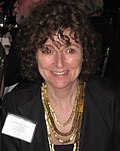
|
Titia de Lange
(b. 1955)
|
 Netherlands Netherlands
 United States United States
|
"for research on telomeres, illuminating how they protect chromosome ends and their role in genome instability in cancer."
|
Rockefeller University
|

|
Napoleone Ferrara
(b. 1956)
|
 Italy Italy
 United States United States
|
"for discoveries in the mechanisms of angiogenesis that led to therapies for cancer and eye diseases."
|
University of California, San Diego
|

|
Eric S. Lander
(b. 1957)
|
 United States United States
|
"for the discovery of general principles for identifying human disease genes, and enabling their application to medicine through the creation and analysis of genetic, physical and sequence maps of the human genome."
|
Massachusetts Institute of Technology
Broad Institute
|

|
Charles L. Sawyers
(b. 1959)
|
 United States United States
|
"for cancer genes and targeted therapy."
|
Howard Hughes Medical Institute
Memorial Sloan-Kettering Cancer Center
|

|
Robert A. Weinberg
(b. 1942)
|
 United States United States
|
"for characterization of human cancer genes."
|
Massachusetts Institute of Technology
Whitehead Institute
|

|
Shinya Yamanaka
(b. 1962)
|
 Japan Japan
|
"for induced pluripotent stem cells."
|
Kyoto University
J. David Gladstone Institutes
University of California, San Francisco
|
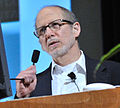
|
Bert Vogelstein
(b. 1949)
|
 United States United States
|
"for cancer genomics and tumor suppressor genes."
|
Howard Hughes Medical Institute
Johns Hopkins University
|
| 2014[3]
|

|
James P. Allison
(b. 1948)
|
 United States United States
|
"for the discovery of T cell checkpoint blockade as effective cancer therapy."
|
M. D. Anderson Cancer Center
|

|
Mahlon DeLong
(b. 1938)
|
 United States United States
|
"for defining the interlocking circuits in the brain that malfunction in Parkinson's disease – this scientific foundation underlies the circuit-based treatment of Parkinson's disease by deep brain stimulation."
|
Emory University
|

|
Michael N. Hall
(b. 1953)
|
 Switzerland Switzerland
 United States United States
|
"for the discovery of Target of Rapamycin (TOR) and its role in cell growth control."
|
Biozentrum University of Basel
|

|
Robert Langer
(b. 1948)
|
 United States United States
|
"for discoveries leading to the development of controlled drug-release systems and new biomaterials."
|
Massachusetts Institute of Technology
|

|
Richard P. Lifton
(b. 1953)
|
 United States United States
|
"for the discovery of genes and biochemical mechanisms that cause hypertension."
|
Yale University School of Medicine
|

|
Alexander Varshavsky
(b. 1946)
|
 Russia Russia
 United States United States
|
"for discovering critical molecular determinants and biological functions of intracellular protein degradation."
|
Caltech
|
| 2015[4]
|

|
Alim-Louis Benabid
(b. 1942)
|
 France France
|
"for the discovery and pioneering work on the development of high-frequency deep brain stimulation (DBS), which has revolutionized the treatment of Parkinson's disease."
|
Joseph Fourier University
|

|
C. David Allis
(1951–2023)
|
 United States United States
|
"for the discovery of covalent modifications of histone proteins and their critical roles in the regulation of gene expression and chromatin organization, advancing the understanding of diseases ranging from birth defects to cancer."
|
Rockefeller University
|
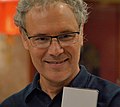
|
Victor Ambros
(b. 1953)
|
 United States United States
|
"for the discovery of a new world of genetic regulation by microRNAs, a class of tiny RNA molecules that inhibit translation or destabilize complementary mRNA targets."
|
University of Massachusetts Medical School
|

|
Gary Ruvkun
(b. 1952)
|
 United States United States
|
Massachusetts General Hospital
Harvard Medical School
|

|
Jennifer Doudna
(b. 1964)
|
 United States United States
|
"for harnessing an ancient mechanism of bacterial immunity into a powerful and general technology for editing genomes, with wide-ranging implications across biology and medicine."
|
University of California, Berkeley
Howard Hughes Medical Institute
Lawrence Berkeley National Laboratory
|

|
Emmanuelle Charpentier
(b. 1968)
|
 France France
|
Helmholtz Centre for Infection Research
Umeå University
|
| 2016[5]
|

|
Edward S. Boyden
(b. 1979)
|
 United States United States
|
"for the development and implementation of optogenetics – the programming of neurons to express light-activated ion channels and pumps, so that their electrical activity can be controlled by light."
|
Massachusetts Institute of Technology
|

|
Karl Deisseroth
(b. 1971)
|
 United States United States
|
Stanford University
Howard Hughes Medical Institute
|

|
John Hardy
(b. 1954)
|
 United Kingdom United Kingdom
|
"for discovering mutations in the amyloid precursor protein (APP) gene that cause early onset Alzheimer's disease, linking accumulation of APP-derived beta-amyloid peptide to Alzheimer's pathogenesis and inspiring new strategies for disease prevention."
|
University College London
|

|
Helen Hobbs
(b. 1952)
|
 United States United States
|
"for the discovery of human genetic variants that alter the levels and distribution of cholesterol and other lipids, inspiring new approaches to the prevention of cardiovascular and liver disease."
|
University of Texas Southwestern Medical Center
Howard Hughes Medical Institute
|
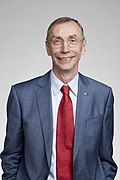
|
Svante Pääbo
(b. 1955)
|
 Sweden Sweden
|
"for pioneering the sequencing of ancient DNA and ancient genomes, thereby illuminating the origins of modern humans, our relationships to extinct relatives such as Neanderthals, and the evolution of human populations and traits."
|
Max Planck Institute for Evolutionary Anthropology
|
| 2017[6]
|

|
Stephen J. Elledge
(b. 1956)
|
 United States United States
|
"for elucidating how eukaryotic cells sense and respond to damage in their DNA and providing insights into the development and treatment of cancer."
|
Brigham and Women's Hospital
Harvard Medical School
Howard Hughes Medical Institute
|

|
Harry F. Noller
(b. 1939)
|
 United States United States
|
"for discovering the centrality of RNA in forming the active centers of the ribosome, the fundamental machinery of protein synthesis in all cells, thereby connecting modern biology to the origin of life and also explaining how many natural antibiotics disrupt protein synthesis."
|
University of California, Santa Cruz
|

|
Roeland Nusse
(b. 1950)
|
 Netherlands Netherlands
|
"for pioneering research on the Wnt pathway, one of the crucial intercellular signaling systems in development, cancer and stem cell biology."
|
Stanford University
Howard Hughes Medical Institute
|

|
Yoshinori Ohsumi
(b. 1945)
|
 Japan Japan
|
"for elucidating autophagy, the recycling system that cells use to generate nutrients from their own inessential or damaged components."
|
Tokyo Institute of Technology
|

|
Huda Zoghbi
(b. 1954)
|
 Lebanon Lebanon
 United States United States
|
"for discoveries of the genetic causes and biochemical mechanisms of spinocerebellar ataxia and Rett syndrome, findings that have provided insight into the pathogenesis of neurodegenerative and neurological diseases."
|
Baylor College of Medicine
Texas Children's Hospital
Howard Hughes Medical Institute
|
| 2018[6]
|
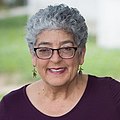
|
Joanne Chory
(1955–2024)
|
 United States United States
|
"for discovering how plants optimize their growth, development, and cellular structure to transform sunlight into chemical energy."
|
Salk Institute for Biological Studies
Howard Hughes Medical Institute
|

|
Peter Walter
(b. 1954)
|
 Germany Germany
 United States United States
|
"for elucidating the unfolded protein response, a cellular quality-control system that detects disease-causing unfolded proteins and directs cells to take corrective measures."
|
University of California, San Francisco
Howard Hughes Medical Institute
|

|
Kazutoshi Mori
(b. 1958)
|
 Japan Japan
|
Kyoto University
|

|
Kim Nasmyth
(b. 1952)
|
 United Kingdom United Kingdom
|
"for elucidating the sophisticated mechanism that mediates the perilous separation of duplicated chromosomes during cell division and thereby prevents genetic diseases such as cancer."
|
University of Oxford
|

|
Don W. Cleveland
(b. 1950)
|
 United States United States
|
"for elucidating the molecular pathogenesis of a type of inherited ALS, including the role of glia in neurodegeneration, and for establishing antisense oligonucleotide therapy in animal models of ALS and Huntington disease."
|
University of California, San Diego
|
| 2019[6]
|
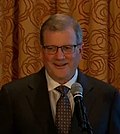
|
C. Frank Bennett
(b. 1960)
|
 United States United States
|
"for the development of an effective antisense oligonucleotide therapy for children with the neurodegenerative disease spinal muscular atrophy."
|
Ionis Pharmaceuticals
|
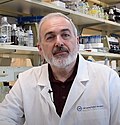
|
Adrian R. Krainer
(b. 1958)
|
 United States United States
|
Cold Spring Harbor Laboratory
|

|
Angelika Amon
(1967–2020)
|
 Austria Austria
 United States United States
|
"for determining the consequences of aneuploidy, an abnormal chromosome number resulting from chromosome mis-segregation."
|
Massachusetts Institute of Technology
|

|
Xiaowei Zhuang
(b. 1972)
|
 China China
 United States United States
|
"for discovering hidden structures in cells by developing super-resolution imaging – a method that transcends the fundamental spatial resolution limit of light microscopy."
|
Harvard University
Howard Hughes Medical Institute
|

|
Zhijian James Chen
(b. 1966)
|
 China China
 United States United States
|
"for elucidating how DNA triggers immune and autoimmune responses from the interior of a cell through the discovery of the DNA-sensing enzyme cGAS."
|
UT Southwestern Medical Center
Howard Hughes Medical Institute
|
| 2020[7]
|

|
Jeffrey M. Friedman
(b. 1954)
|
 United States United States
|
"for the discovery of a new endocrine system through which adipose tissue signals the brain to regulate food intake."
|
Rockefeller University
Howard Hughes Medical Institute
|

|
Franz-Ulrich Hartl
(b. 1957)
|
 Germany Germany
|
"for discovering functions of molecular chaperones in mediating protein folding and preventing protein aggregation."
|
Max Planck Institute of Biochemistry
|

|
Arthur L. Horwich
(b. 1951)
|
 United States United States
|
"for discovering functions of molecular chaperones in mediating protein folding and preventing protein aggregation."
|
Yale School of Medicine
Howard Hughes Medical Institute
|

|
David Julius
(b. 1955)
|
 United States United States
|
"for discovering molecules, cells, and mechanisms underlying pain sensation."
|
University of California, San Francisco
|

|
Virginia Man-Yee Lee
(b. 1945)
|
 China China
 United States United States
|
"for discovering TDP43 protein aggregates in frontotemporal dementia and amyotrophic lateral sclerosis, and revealing that different forms of alpha-synuclein, in different cell types, underlie Parkinson's disease and Multiple System Atrophy."
|
University of Pennsylvania
|
| 2021[8]
|

|
David Baker
(b. 1962)
|
 United States United States
|
"for developing technology that allowed the design of proteins never seen before in nature, including novel proteins that have the potential for therapeutic intervention in human diseases."
|
University of Washington
Howard Hughes Medical Institute
|

|
Catherine Dulac
(b. 1963)
|
 France France
 United States United States
|
"for deconstructing the complex behavior of parenting to the level of cell-types and their wiring, and demonstrating that the neural circuits governing both male and female-specific parenting behaviors are present in both sexes."
|
Harvard University
Howard Hughes Medical Institute
|

|
Yuk Ming Dennis Lo
(b. 1963)
|
 Hong Kong Hong Kong
|
"for discovering that fetal DNA is present in maternal blood and can be used for the prenatal testing of trisomy 21 and other genetic disorders"
|
The Chinese University of Hong Kong
|

|
Richard J. Youle
(b. 1952)
|
 United States United States
|
"for elucidating a quality control pathway that clears damaged mitochondria and thereby protects against Parkinson's Disease."
|
National Institutes of Health
|
| 2022[9]
|

|
Jeffery W. Kelly
(b. 1960)
|
 United States United States
|
"for elucidating the molecular basis of neurodegenerative and cardiac transthyretin diseases, and for developing tafamidis, a drug that slows their progression."
|
Scripps Research Institute
|

|
Katalin Karikó
(b. 1955)
|
 Hungary Hungary
 United States United States
|
"for engineering modified RNA technology which enabled rapid development of effective COVID-19 vaccines."
|
BioNTech
University of Pennsylvania
|

|
Drew Weissman
(b. 1958)
|
 United States United States
|
University of Pennsylvania
|

|
Shankar Balasubramanian
(b. 1966)
|
 India India
 United Kingdom United Kingdom
|
"for the development of a robust and affordable method to determine DNA sequences on a massive scale, which has transformed the practice of science and medicine."
|
University of Cambridge
|

|
David Klenerman
(b. 1959)
|
 United Kingdom United Kingdom
|
University of Cambridge
|

|
Pascal Mayer
(b. 1963)
|
 France France
|
Alphanosos
|
| 2023[10]
|

|
Clifford P. Brangwynne
(b. -)
|
 United States United States
|
"for discovering a fundamental mechanism of cellular organization mediated by phase separation of proteins and RNA into membraneless liquid droplets."
|
Princeton University
Howard Hughes Medical Institute
Marine Biological Laboratory
|

|
Anthony A. Hyman
(b. 1962)
|
 United Kingdom United Kingdom
|
Max Planck Institute of Molecular Cell Biology and Genetics
|

|
Demis Hassabis
(b. 1976)
|
 United Kingdom United Kingdom
|
"for developing a deep learning AI method that rapidly and accurately predicts the three-dimensional structure of proteins from their amino acid sequence.."
|
DeepMind
|

|
John Jumper
(b. -)
|
 United States United States
|
DeepMind
|

|
Emmanuel Mignot
(b. 1959)
|
 United States United States
|
"for discovering that narcolepsy is caused by the loss of a small population of brain cells that make a wake-promoting substance, paving the way for the development of new treatments for sleep disorders.."
|
Stanford University School of Medicine
|

|
Masashi Yanagisawa
(b. 1960)
|
 Japan Japan
 United States United States
|
University of Texas Southwestern Medical Center
University of Tsukuba
|
| 2024
[11]
|

|
Carl H. June
(b. 1953)
|
 United States United States
|
"for the development of chimeric antigen receptor T cell immunotherapy whereby the patient's T cells are modified to target and kill cancer cells."
|
Perelman School of Medicine, University of Pennsylvania
|

|
Michel Sadelain
|
 France France
|
Memorial Sloan Kettering Cancer Center
|

|
Sabine Hadida
|
 Spain Spain
 United States United States
|
"for developing life-transforming drug combinations that repair the defective chloride channel protein in patients with cystic fibrosis."
|
Vertex Pharmaceuticals
|

|
Paul Negulescu
|
 United States United States
|

|
Fredrick Van Goor
|
 United States United States
|

|
Thomas Gasser
|
 Germany Germany
|
"for identifying GBA1 and LRRK2 as risk genes for Parkinson's disease, implicating autophagy and lysosomal biology as critical contributors to the pathogenesis of the disease."
|
Hertie Institute for Clinical Brain Research, University of Tübingen and German Center for Neurodegenerative Diseases
|

|
Ellen Sidransky
|
 United States United States
|
National Human Genome Research Institute, NIH
|

|
Andrew Singleton
(b. 1972)
|
 United Kingdom United Kingdom
|
National Institute on Aging, NIH
|
| 2025
[12]
|
|
Daniel J. Drucker
(b. 1956)
|
 Canada Canada
|
"For the discovery and characterization of GLP-1 and revealing its physiology and potential in treating diabetes and obesity."
|
Lunenfeld-Tanenbaum Research Institute
Sinai Health
University of Toronto
|

|
Joel Habener
|
 United States United States
|
Massachusetts General Hospital
Harvard Medical School
|

|
Jens Juul Holst
(b. 1945)
|
 Denmark Denmark
|
Novo Nordisk
University of Copenhagen
|

|
Lotte Bjerre Knudsen
(b. 1964)
|
 Denmark Denmark
|

|
Svetlana Mojsov
(b. 1947)
|
 North Macedonia North Macedonia
 United States United States
|
Rockefeller University
|

|
Stephen L. Hauser
(b. 1949)
|
 United States United States
|
"For establishing the role of B cells in multiple sclerosis and developing B-cell based treatments, and for revealing that Epstein-Barr virus infection is the leading risk for multiple sclerosis."
|
University of California, San Francisco
|

|
Alberto Ascherio
(b. 1953)
|
 United States United States
|
Harvard University
|

|
David R. Liu
(b. 1973)
|
 United States United States
|
"For developing base editing and prime editing, technologies that edit the DNA of living systems without cutting the DNA double helix, and rewrite segments of genes at their native locations, enabling the correction or replacement of virtually any mutation."
|
Merkin Institute for Transformative Technologies
Harvard University
Howard Hughes Medical Institute
|





























































